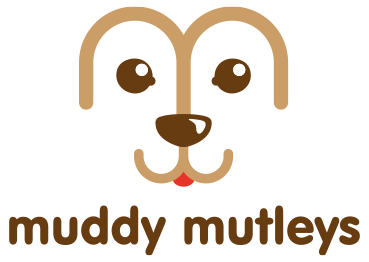Many people believe that if a dog is wagging his tail, he is happy. On many occasions I have heard people say, he growls but he is wagging his tail at the same time, so he must be fine. But we are missing a big chunk of communication from our dog. We must look at the whole of the dog not one part in isolation. We must also look at our dog’s communication in context and consider the environment to really understand what our dog is desperately trying to communicate to us or to another dog or animal.
So, when is a tail wag a happy wag? I always refer to this as a windmill tail or a helicopter tail. A dog will spin their tail around and around in a big circle and often the momentum of this will make its entire body wiggle and sway. Everything about the dog looks soft and squidgy and fluid and floppy. Their jaw will hang down their tongue might be hanging out. They will have floppy eyes and ears. They will in fact look completely goofy.
I was with a client yesterday and their dog had a valued toy in his mouth. A dog he shares a home with approached him and he started to growl, lip curled, teeth showing. His tail was wagging. Although he was lying down, his tail was sticking upright and wagging quite fast and to the left. When you look at this in a context, you can see that the wagging tail is part of his communication to the other dog to stay back. It’s a warning to not come any closer. This is where context plays an important part and where we are best advised to look at the whole dog.
It is very important that we never tell a dog off for growling. This is communication and we must respect it and give a growling dog space.

It is believed that a tail wagging to the right is associated with positive emotions indicating that it is safe to approach and a tail wagging to the left is a sign that the dog is unsure and best-given space.
The height of the tail also gives us a clue to the emotional state of the dog. A high straight tail will indicate that the dog is alert and excited. If it is wagging quickly this too is a good indication that the dog is excited or ready for action.
If your dog’s tail is down hanging low this is a sign that your dog may be unsure about its surroundings. If this is coupled with a slow wagging to the left, the dog is very possibly wary of an approaching person or animal.
A tail sticking straight out at the back indicates that the dog is in a neutral state and is just processing the environment. If the tail is moving back and forth slowly this indicates that the dog is a little unsure and is considering his or her next move. Short strokes, left and right, tight and restricted will indicate that the dog is anxious or uptight.
If your dog looks as if they are trying to make itself as small as possible, tucking its tail under their bodies, then it is really unhappy and it is best to remove them from the situation as quickly as you can.
If you are in any doubt as to what your dog’s tail wagging might be indicating, here are some other parts of their body to look at for more clues.
Ears: if their ears look flat like airplane ears, this is an indication that they are uncomfortable or unsure. Pricked ears are a sign of arousal or excitement. Ears that are pulled back tight against the head are an indication that your dog is not comfortable. Often this goes with pulled-back tension around the mouth. I always think it looks like someone with their ponytail fastened too tightly.
Eyes: Whale eye is a phrase we use when you can see just a crescent of white in the dog’s eye as they are looking at something they are finding threatening but keeping their body and nose pointed in the direction they are planning to escape in. We can spot a lot of tension around our dog’s eyes when they are feeling uncomfortable in a certain situation.

Mouth: You may see a similar tension in a dog’s mouth, with lips, pulled back tight. If you see your dog raise a lip then they are really giving you a warning not to approach. We often think of growling as the first sign that a dog is unhappy but actually, it is one of the last. Prior to growling our dog will have given us multiple signals that they want space.
Lip licking and yawning are also signs of discomfort.

This little dog has raised his leg, ready to move away from whatever is making him feel uncomfortable.
Hips: If their hips are tight or tucked under, they are unsure of a situation. You might see them leaning back ready to move off and create some space away from the threat.
Head: If their head is low, their shoulders low, they may have eyed something and they are getting ready to charge after it. This may be coupled with a low, slowly swinging tail.
It is really worthwhile learning to read your dog. For more information on body language and the ladder of aggression contact me clare@muddymutleys.com. These links might be useful too: https://www.youtube.com/watch?v=YuGpo1FwNTY
https://muddy-mutleys-dog-training-school.teachable.com/blog/233013/learning-to-read-dog
Read some of our other blogs here.
